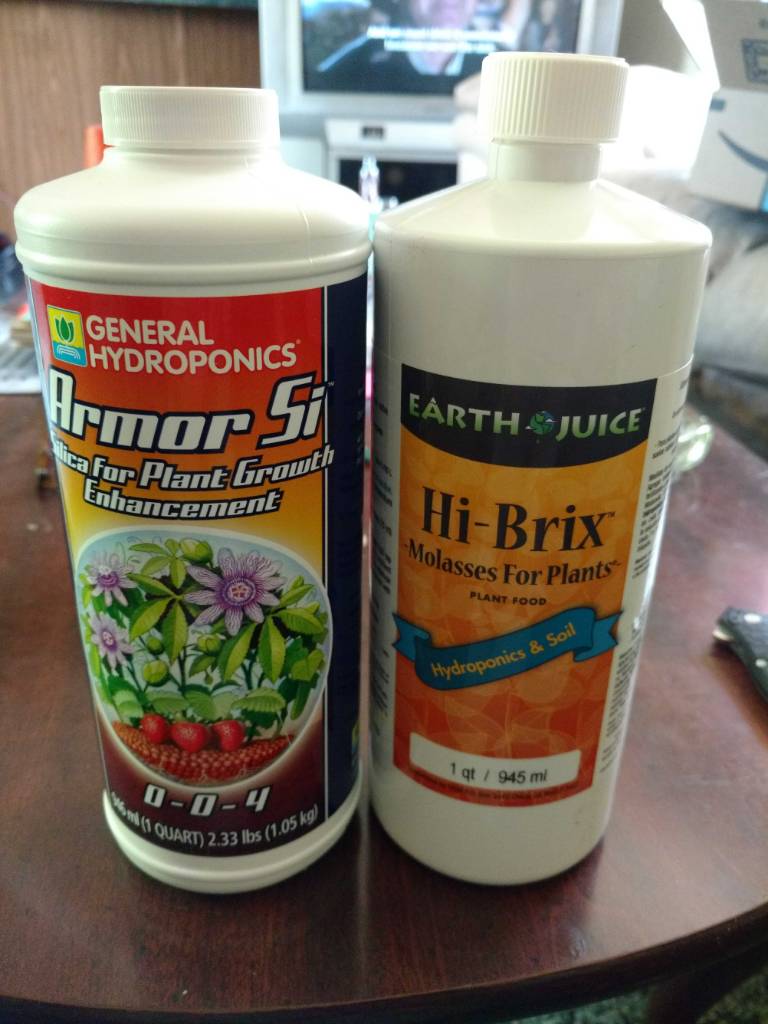Hi AACT veterans!
Me and my wife made our first compost tea batch and sprayed it yesterday. However, we got minimal foam and stumbled through everything. We would like to do a general sanity check of what we did with someone who has knowledge, as opposed to us who are total beginners!
It was made with components of a commercial kit from a local eco grower. This constituted of:
- 10 L (~2.6 gallons) water, de-chlorinated (tap water here is chlorinated with sodium hypochlorite) for 48 hours under aquarium pump with two stones
- 1 dL (~0.42 cups) good quality vermicompost
- 10 mL (~2.0 teaspoons) "microbial nutrition" sludge (probably molass based with addition of some stuff, maybe agar?)
- 10 mL (~2.0 teaspoons) "Chili Focus" fertilizer due to missing 5 mL (~1.0 teaspoons) "fine-powdered minerals" (probably basalt based) which should have been in the kit but was postponed
The water was measured at a pretty consistent 22°C for 18 hours a day (due to close proximity to our grow tent) and maybe at a low of 20°C during the night. Two stones and one aquarium pump bubbled continuously and the whole bucket was covered with aluminum foil during this process (to prevent fall-in of unwanted stuff and light for growth of algae or other weirdness). Total brewing time: 40 hours.
Extremely subtle foam did appear and the tea had a very light color, albeit a slight brown tendency. The smell was slightly "earthy", but this was also quite subtle. Likely not as many log's in growth numbers as one can get, but still probably some. We own no required 400× microscope for actual validation.
Then the pump was shut off and 5 mL (~1.0 teaspoon) of dishwashing detergent as a wetting agent added. This was a mistake since this concentration, 0.05% v/v, of the detergent was approximately what is recommended for doing dishes and dishwashing detergent is obviously slightly phytotoxic. Had no other wetting agent available but should have used lower concentration. The water NOW had a head, but of the unwanted kind! Nevertheless, it was sprayed on all the leaves with good coverage, due to the detergent, and the rest distributed throughout all the soils. Barely enough for all!
Mainly I want to know if you also suspect a non-ideal growth and what to do about this for the next batch in a couple of days (already dechlorinating water as I write this)? Increase temperature? Add secondary source of nutrition (e.g. molasses)? Brew longer (seller of kit discourages >36h to not kill off aerobic growth and/or introduce unwanted growth, e.g. shift from distribution in vermicompost)? Also, would you expect a bactericidal effect from that concentration of dishwashing liquid? I've already ordered polysorbate 80 ("tween 80") as a general wetting agent for all our foliar applications which should be available, along with the powdered minerals, for the next batch.
All input would be
greatly appreciated!
For my own contribution, I would like to highlight this article from 2014:
Potential of compost tea for suppressing plant diseases. It contains a good and relatively recent overview of the studies which have been done on AACT & NCT to suppress pathogens. I've seen some doubt in this thread about this. Quite an interesting and promising read. The tables themselves are noteworthy since they overview studies, pathogens and main result!
Oh, and as to the "why" of us stressing about AACT:
Main motivation: Suppress bacterial intruder on Padrón peppers and prevent intrusion on other plants, now isolated from the grow tent, before spread and massive damage is to occur. Symptoms of intrusion: Tan brown spots with dark outline, biased to leaf edges and "splattery" distribution of very small size with some older of larger size, no obvious yellow halos; possibly
Xanthomonas/BLS but maybe/hopefully not. Padrón peppers have massive edema so likely water-soaked leaves (with no other permanent leaf-colonization) which attracted it. Neem oil sprayed a couple of weeks ago which also could've contributed a "nutritional base" for initial rapid colonization of "the pathogen" (remember, Neem oil has no particular general bactericidal effect but only insecticidal).
Secondary motivation: Stimulate good, lasting microbiome in soil/leafs to increase growth/nutrition uptake. Suspect it's non-ideal now due to plants only grown indoors in tent (none touches outside microbial life) and relatively frequent soap-treatments to reduce aphid/thrips load (which
must negatively affect a standing microbiome colonization, especially foliar but maybe also in soil?).

